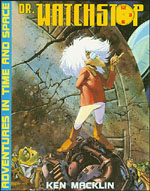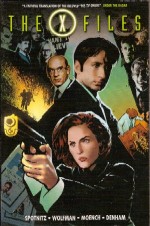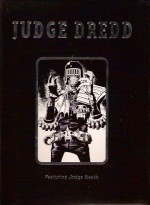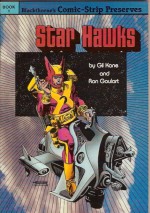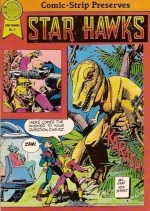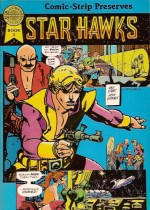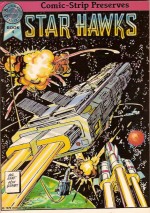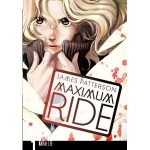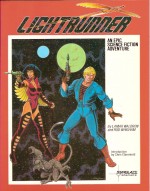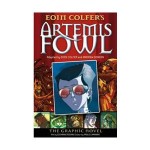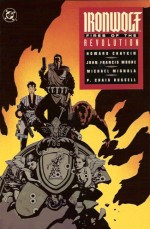
By Kou Yaginuma, translated by Maya Rosewood (Vertical)
ISBNs: 978-1-934287-84-2 & 978-1-934287-86-6
The mystery and imagination of space travel, so much a component of immediate post-World War II industrial society, returns in all its resplendent wonder and glory in this freshly translated new manga series from young talent Kou Yaginuma who first stormed to public attention with the poignant short story ‘2015 Nen no Uchiage Hanabi’ (‘2015: Fireworks’, published in Comics Flapper magazine, June 2000) before turning the subject, themes and characters into a longer epic combining hard science and fiction with lyrical mysticism and traditional school days growth pangs
2024AD: Asumi Kamogawa is a teenaged girl who has always dreamed of going into space. From her earliest moments the lonely child has gazed up at the stars with her imaginary friend Mr. Lion, staring at the heavens, and especially at the twinkling glow of Virgo and the alluring binary star Spica. An isolated, serious child, she lives with her father, a labourer who once worked for the consortium which built the space rockets for Japan’s Space Program.
In 2010, when Asumi was a year old the first Japanese space launch ended in complete disaster when the ship, dubbed ShishigÅ (“The Lionâ€), exploded and crashed to earth on the city of Yuigahama. Hundreds of people were killed and injured, including Asumi’s mother. Maimed and comatose, she took years to die and the trauma broke her grieving husband and utterly traumatised the infant Asumi.
In response to the disaster Japan founded an astronaut and space sciences training school and as the first volume opens Asumi discusses with her imaginary friend the best way to tell her dad that she has secretly taken the entrance exam. Tomoro Kamogawa is a no fan of the space program, having lost his wife, his engineering job and his pride to the race for space. He has raised his daughter alone by working two and often three menial jobs at a time for over a decade.
The problem is taken out of her hands when he opens her results letter and sees that she has been accepted for the next intake for the Tokyo National Space School. After initial resistance he surprises Asumi by not only allowing her to go, but also by giving her all his savings to pay her expenses. Arriving in Tokyo, Asumi moves into the dilapidated campus dormitory with a few other students too poor to live in private lodgings. A further surprise comes when she discovers that Shinnosuke Fuchuya, the boy who teased and bullied her all through school, has also been accepted for the Astronaut course. When questioned he grunts that he’d rather do anything other than run the family fireworks shop…
The course is heavily over-subscribed so the candidates are winnowed out by spending the first week in an adaptability stress test: three to a room, in complete isolation, taking mental and physical tests to determine how they would cope with conditions similar to an extended stay in a space capsule. Tiny Asumi (only four feet, eight inches tall) is placed with the jolly Kei Oumi and chilly, acerbic Marika Ukita whilst Fuchuya’s team is cursed with spooky, ultra-cool style-icon Shu Suzuki…
It quickly becomes clear that the tutors are being devious and the tests are actually designed to measure not just their survival capabilities but also their ability to get on in a crisis. As the week progresses tempers fray and Asumi suffers a flashback to the aftermath of The Lion’s crash…
Only thirteen teams make it through the test. However, even though she is a survivor, worse is to come for the young Asumi…
This first volume includes that painfully powerful and wistful tale‘Fireworks: 2015’, the first of five introductory stories the artist produced for Seinen (manga for older readers; mostly males aged 18-30) publication Comics Flapper. Asumi is a troubled little girl: always running away and even stealing the ashes of her mother, who has just died after years in a coma following the crash of the space rocket onto Yuigahama city.
On her travels the little girl meets a man with a lion’s head, who seems to know her teacher Suzinari. Deeply concerned for Asumi, Suzinari also has problems of her own. She still desperately misses her fiancé, who piloted The Lion and died in the tragic explosion five years previously…
‘Asumi’ is another prequel tale, showing the miserable, melancholic period immediately following the disaster. Bullied in elementary school the little stargazer runs away and gets lost in the wild woods, before chief miscreant Fuchuya heroically saves her from drowning. But were the people Asumi met just hallucinations of an oxygen-starved brain or something far more meaningful and miraculous…?
The first book ends with the vignette ‘Another Spica’ wherein wannabe manga artist Yaginuma is working part-time on a soft-drink stand one Christmas when he sees a little girl who twinkled like the stars and a man with a lion’s head…
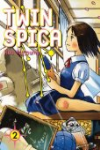
The second volume follows space cadet Asumi as she adjusts to life in Tokyo: moving into women’s dorm “The Seagullâ€, making friends, starting classes and scraping by on her meager funds. An assiduous student, she nevertheless incurs the hostility of the astrophysics lecturer Professor Sano. Unknown to her Sano has bad history with her father and will seemingly do anything to thwart her dreams…
Asumi is far smaller than all the other candidates and though determined to succeed in the arduous physical and mental training incurs real problems in the swimming classes due to her near-drowning as a child. Moreover her size means she will need a custom-made pressure suit – giving Sano an opportunity to force her out by citing budget restrictions.
When this doesn’t work he steps up his campaign and really turns the screw on the unsuspecting Asumi, revealing a shocking secret about her father…
This volume also contains prequel stories of Asumi’s early life and in ‘Campanella’s Forest‘ (referencing author Kenji Miyazawa’s novel Night on the Galactic Railroad) and exploring the past of the astronaut who piloted The Lion and highlighting Suzinari’s relationship with him. Meanwhile, Asumi has got lost again and stumbled upon something wonderful in the woods…
Tomoro Kamogawa is the tragic star of ‘Our Stars, Leaf Stars’. In the wake of the Lion disaster Asumi’s father was assigned by the corporation who built the ship to head the reparations committee. Guilt-wracked and himself bereaved, the devastated engineer had to visit and apologize to each and every survivor or victim’s grieving family. Meanwhile, little Asumi has found a new friend: another little girl forever scarred by the crash.
And as always the faithfully attendant Mr. Lion looks sadly on …
The volume concludes with a second ‘Another Spica’ episode as the cartoonist relates the time he worked in a shopping mall and had to dress up in a monkey suit, as that girl and that lion-headed guy simply looked on and mocked…
Twin Spica ran for eight enchanting years (September 2001 to August 2009): sixteen full volumes tracing the path of Asumi and her friends from starry-eyed students to fulltime astronauts and the saga spawned both anime and live action TV series.
This delightful comicbook epic has everything: plenty of hard science to back up the savvy extrapolation, a believable, likable cast, an enduring mystery, tender moments, isolation and teen angst, dawning true friendships, all wrapped up in a joyous coming-of-age drama with supernatural overtones and gobs of pure sentiment.
This tale reinvigorates the magical allure of the Wild Black Yonder for a new generation and is a treat no imagineer with head firmly in the clouds can afford to miss…
These books are printed in the Japanese right to left, back to front format.
© 2010 by Kou Yaganuma/Media Factory. Translation © 2010 Vertical, Inc. All Rights Reserved.
